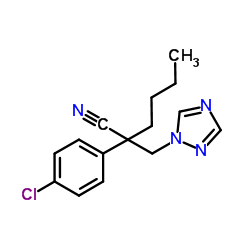One of Colorado’s largest marijuana distributors and growers, LivWell, Inc., successfully moved to dismiss a “first of its kind” class action lawsuit brought against it for the use of an allegedly harmful petroleum-based fungicide on its marijuana crops. The decision, while favorable to the defense, may also have provided a roadmap for similar suits in the future.
Plaintiffs Lack Standing, Court Finds
Plaintiffs and putative class representatives Brandon Flores and Brandie Larrabee claimed the pesticide, which contains the active ingredient myclobutanil, emits potentially harmful hydrogen cyanide gas when the marijuana is burned. However, the lawsuit never alleged physical, toxic injury. Instead, plaintiffs asserted causes of action for economic injury (including breach of contract, misrepresentation, and breach of warranty claims), alleging only that they overpaid for the marijuana in light of its “contamination” with myclobutanil.
Brandie Larrabee claimed the pesticide, which contains the active ingredient myclobutanil, emits potentially harmful hydrogen cyanide gas when the marijuana is burned. However, the lawsuit never alleged physical, toxic injury. Instead, plaintiffs asserted causes of action for economic injury (including breach of contract, misrepresentation, and breach of warranty claims), alleging only that they overpaid for the marijuana in light of its “contamination” with myclobutanil.
In issuing its order dismissing the case, the court engaged in a straightforward standing analysis under Wimberly v. Ettenberg, 570 P.2d 535, 539 (Colo. 1977), which requires a plaintiff to demonstrate both that (1) he suffered an injury in fact, and (2) his injury was to a legally protected interest. The court found that:
[p]laintiffs’ sole stated injury is that they overpaid for defendant’s product. There are no allegations that the product did not perform as it was supposed to, and indeed the Complaint alleges that Plaintiffs consumed the product. . . [n]or are there any allegations that Plaintiffs suffered physical or emotional injury. (citations omitted)
Citing various cases that a claim of diminished value does not state an injury in fact, including Rule v. Fort Dodge Animal Health, Inc., 604 F. Supp. 2d 288 (D. Mass 2009) and Rivera v. Wyeth-Ayerst Laboratories, 283 F.3d 315 (5th Cir. 2002), the court found unavailing authorities cited by plaintiffs because there was no possibility of reselling the marijuana plaintiffs purchased. As such, the court found that plaintiffs suffered no injury in fact and dismissed the case. Notably, the decision does not represent a substantive finding that the fungicide at issue was safe for human consumption.
A Roadmap for Future Toxic Injury Litigation?
The LivWell suit was dismissed because of a “legal technicality:” plaintiffs lacked standing to proceed in the absence of a legally cognizable injury in fact. However, in so ruling, the court may very well have unwittingly supplied a roadmap for future lawsuits. The court’s explicit statement that plaintiffs made no allegations of physical injury suggests that such an allegation would have been sufficient to satisfy the “actual injury” requirement and would have allowed plaintiffs to proceed with their lawsuit. Thus, future plaintiffs can cure this defect merely by pleading actual injury.
The Bigger Picture
This case highlights a growing area of concern for state governments, and industry participants, involving consumer safety surrounding the use of legalized use of cannabis.
With numerous states  now allowing marijuana to be legally sold for medical and/or recreational use, individual state regulations are struggling to keep up. For example, in California, the Department of Pesticide Regulation has published a bulletin called “Pesticide Use on Marijuana,” which states that there are no pesticides registered for use on marijuana and the use of pesticides on marijuana plants has not been reviewed for safety and human health effects. In fact, the only pesticide products not illegal on marijuana are those that contain labels with active ingredients exempt from residue-tolerance requirements and registered for use that is broad enough to include use on marijuana plants. The pesticide at issue in the Colorado case was approved for use on certain foods such as grapes, but banned for use on tobacco, creating confusion for those who are in need for products that control pests on their growing crops.
now allowing marijuana to be legally sold for medical and/or recreational use, individual state regulations are struggling to keep up. For example, in California, the Department of Pesticide Regulation has published a bulletin called “Pesticide Use on Marijuana,” which states that there are no pesticides registered for use on marijuana and the use of pesticides on marijuana plants has not been reviewed for safety and human health effects. In fact, the only pesticide products not illegal on marijuana are those that contain labels with active ingredients exempt from residue-tolerance requirements and registered for use that is broad enough to include use on marijuana plants. The pesticide at issue in the Colorado case was approved for use on certain foods such as grapes, but banned for use on tobacco, creating confusion for those who are in need for products that control pests on their growing crops.
In 2013, the Journal of Toxicology published an article which attempted to quantify to what extent cannabis consumers may be exposed to pesticide and other chemical residues when they inhaled cannabis smoke. The authors noted that in 2009 the Los Angeles City Attorney’s office had tested medical samples available in California dispensaries and found two of the three samples they tested had extremely high levels of bifenthrin, a chemical used in pesticides. Further, the study found that recovery of pesticides in unfiltered smoking media such as glass pipes and water pipes ranged from 69.5% to 42.2%. Recovery from filtered water pipes was significantly lower – only .08% to 10.9%.
Substantial Litigation Risks For A “Growth” Industry?
As more states allow the legal use of cannabis, the state regulatory agencies are beginning to consider regulations for the industry. Inevitably, this leads to questions as to how existing state and federal environmental laws may apply to plants and their associated fertilizers, pesticides and growth agents. As a result, many producers of legal marijuana may be forced to guess what products may work on their crops, what products are safe when marijuana is smoked, what products are safe on plants ingested in foods, as well as what – if any – warnings may be required when their products are sold. At the same time, emerging businesses in the fledgling industry will likely find themselves beset by the same kinds of toxic tort litigation faced by other manufacturers, including pharmaceutical companies, for various alleged injuries as well as failure to warn of those potential injuries. Thus, as the LivWell case demonstrates, more claims for toxic injury may be on the horizon as the industry grows.
Celebrate this win with the best CBD oil products on the web. You can use dan pens with CBD, which helps to relieve anxiety, you can buy dab pen online from VapeActive website. Buy CBD Products has the highest quality CBD oil. Check them out today.


